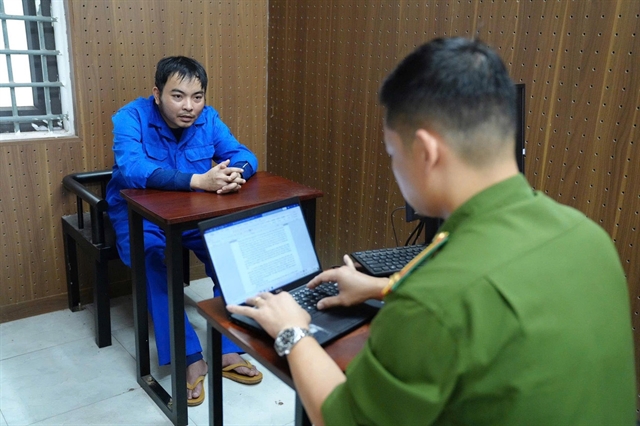 Society
Society


|
| Local authorities in the Mekong Delta province of Bến Tre give fresh water containers to poor residents in response to droughts and saline intrusion. VNA/VNS Photo |
HÀ NỘI Việt Nam is aiming to continue reducing poverty, prioritising poor mountainous regions and ethnic minority groups.
The Central Steering Committee for the National Target Programme on Sustainable Poverty Reduction agreed plans to cut the average poverty rate by between 1 and 1.5 per cent each year nationwide.
But in ethnic groups the bar is set much higher, as officials aim to reduce poverty by 34 per cent.
The number of poor ethnic minority households is expected to decrease by 34 per cent this year based on multi-dimensional poverty criteria.
The 2020 targets were proposed at a meeting Tuesday which also reported positive statistics Việt Nam has already achieved.
According to the Ministry of Labour, Invalids and Social Affairs, Việt Nam’s average poverty rate stayed at below 4 per cent by the end of 2019, a 1.3 per cent reduction compared to the end of 2018.
In extremely disadvantaged communes, the poverty rate last year reduced by 3 to 4 per cent compared to 2018.
More than VNĐ12 trillion (US$521 million) was mobilised from State budget, local budgets and other sources for sustainable poverty reduction last year.
The State funds are to help poor and near-poor households get better healthcare, education, housing, legal services, loans and production.
More than 1.3 million poor households across the country received free health insurance cards last year.
The Government paid 70 per cent of health insurance fees for about 1.2 million near-poor households.
The National Target Programme on Sustainable Poverty Reduction also helped more than 1.9 million households access to loans from Vietnam Bank for Social Policies and offered jobs to nearly 267,000 labourers.
However, the steering committee was told a number of policies have been assessed and proven to only have short-term benefits and will soon become irrelevant. The local poverty alleviation steering committees in some areas have not completed their assigned tasks.
In particular, ethnic minority people lack access to assistance policies.
The Central Steering Committee for the National Target Programme on Sustainable Poverty Reduction agreed to take innovative solutions to better connect resources, organisations, individuals to improve lives of the poor.
Minister of Labour, Invalids and Social Affairs Đào Ngọc Dung proposed the programme’s steering committees in the northern, central and southern regions review the work over the past few years and set new targets for the period to 2025.
They must not only focus on sustainable incomes but also prioritise construction of new houses for the poor, especially those in the mountainous areas.
According to a Government decision issued in 2015, a household classified as being poor in rural areas has monthly income of VNĐ700,000 ($30) per capita or below.
A rural poor household can also have monthly income per capita between VNĐ700,000 and VNĐ1 million but lack access to three out of five basic social services (healthcare, education, housing, clean water and hygiene, information).
In poor urban areas, the income criteria can be as low as VNĐ900,000 ($39) per person, per month.
Some households can have a monthly income between VNĐ900,000 and VNĐ1.3 million ($56) per person and lack access to three out of the services.
By the end of this year, the national poverty reduction programme aims to raise average income per capita of poor households by 1.5 times compared to that 2015.
In extremely disadvantaged and ethnic minority areas, the income must double the amount it was five years ago. VNS



